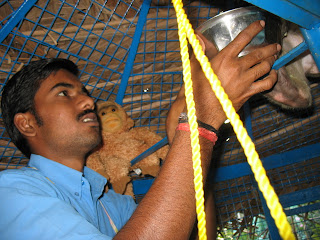An article entitled, "For the record, TN temples bigger" appeared in National papers throughout India. The following narrative is taken from 'Hindustan Times, Friday, December 28, 2007':-
**************************************************
"Have officials of the Guinness Book of Records committed a blunder by declaring Delhi’s Akshardham Temple as the largest Hindu temple complex in the world? It appears so. Officials of the famous Meenakshi Temple in Madurai maintain that Delhi's Akshardham is smaller than at least three different temple complexes in Tamil Nadu alone.
 Meenakshi Temple
Meenakshi Temple
“Even if one considers the measurements of the Akshardham Temple given by the Guinness officials, Madurai’s Meenakshi Temple and the Arunachaleswarar Temple in Tiruvannamalai are definitely larger temple complexes,” said B Raja, joint commissioner of the Meenakshi Temple.
He pointed out that the outermost wall of the Meenakshi Temple is 850 ft long and 800 ft wide. The total area of the complex is 17 acres or 7.40 lakh sq ft. This is much larger than Akshardham which, press reports have indicated, is only 356 ft long and 316 ft wide, its grounds covering merely 86,342 sq ft.
 Akshardham Temple
Akshardham Temple
When informed that the entire Akshardham complex was spread over 30 acres, Raja said, "A temple is a place for prayer. It is incorrect to include facilities for non-religious activities such as restaurants or boating arrangements as the Akshardham complex has, as part of a temple, just because they happen to be in the vicinity."
Raja also noted that the Tiruvannamalai Temple dedicated to Lord Siva is even larger — at 25 acres or 10.89 lakh sq ft — than the Meenakshi Temple. “However, the built-up area in Madurai covers a wider area than Thiruvannamalai,” he said. Also the main tower at Tiruvannamali is 217 ft high.
 Tiruvannamalai Temple
Tiruvannamalai Temple
Even these two temple complexes are dwarfed in size when one takes into account the massive Sri Ranganthaswamy Temple complex in Srirangam near Tiruchy, a noted historian pointed out.
“Srirangam, surrounded by the waters of river Kaveri, is a 600-acre island-town enclosed within the seven walls of the gigantic Sri Ranganathaswami Temple. There are 21 gopurams, among which the Rajagopuram is the tallest in South India — it is 72 metres (about 220 ft) in height, and dates to the 17th century, although it was fully completed in 1987. The temple complex measures 950 metres by 816 metres (about half a square mile) along its outer perimeter,“ writes Prof VS Seshadri.
 Sri Ranganthaswamy Temple
Sri Ranganthaswamy Temple
"But we are curious to know if their officials visited our large temples like Srirangam, Madurai Meenakshi, Thiruvannamalai and Thiruvarur temples before arriving at this verdict," said a senior official of the Temple Administration Department.
State Temple Administration officials, however, said they have no immediate plan to challenge the Guinness classification of Akshardham."
 Vallalar
Vallalar





































